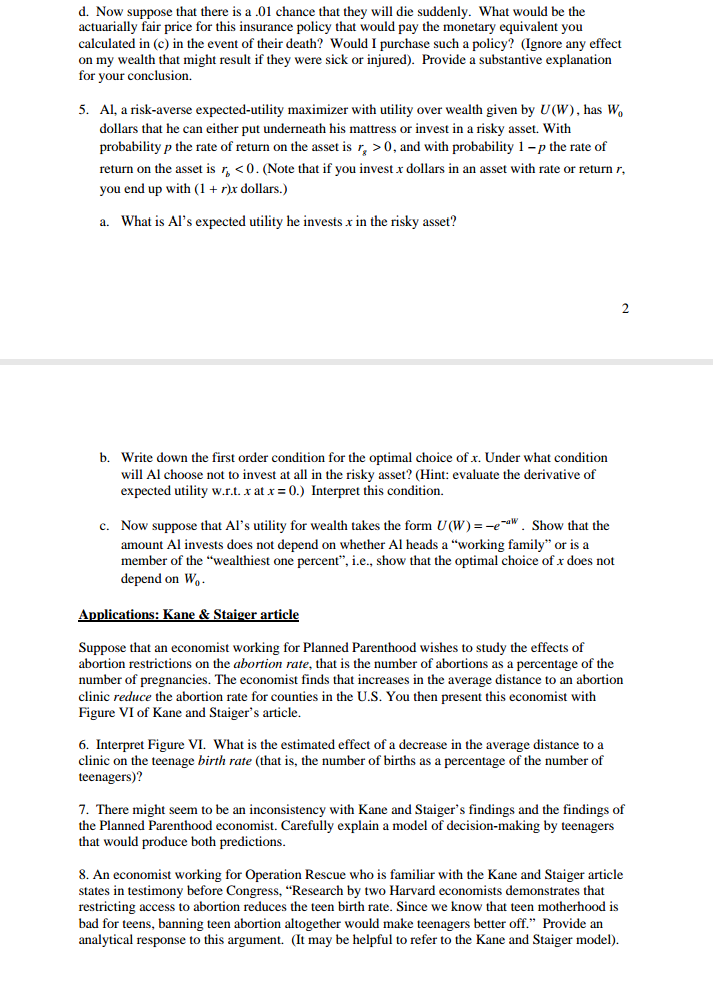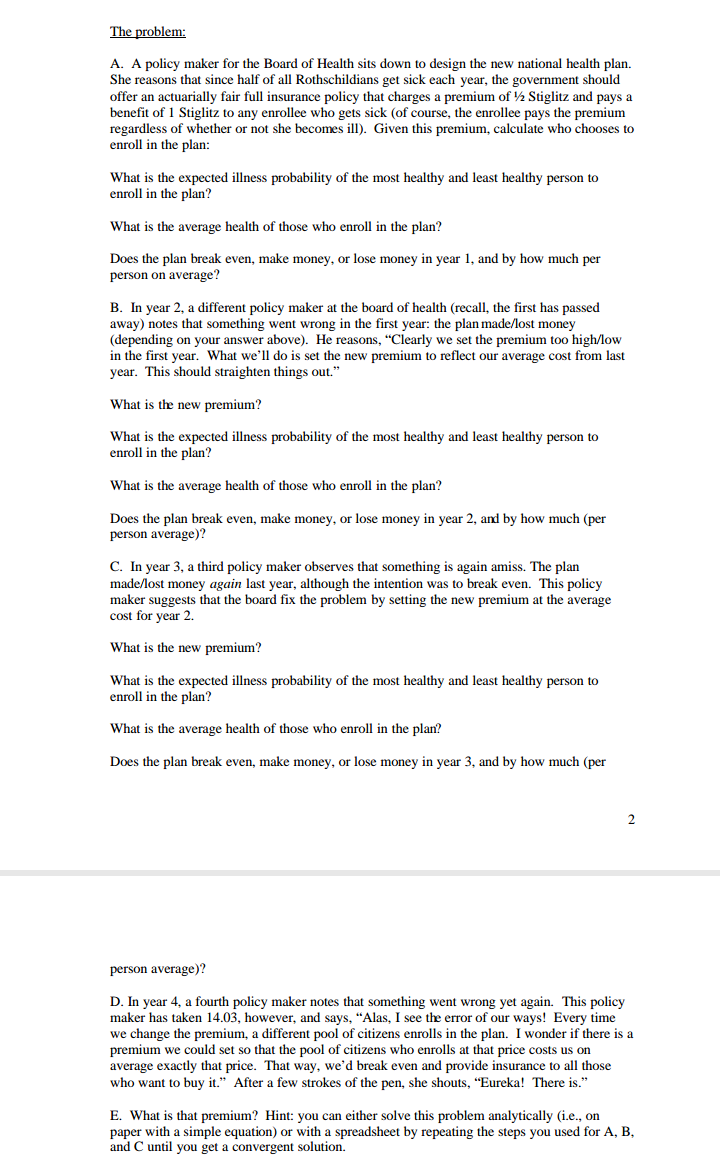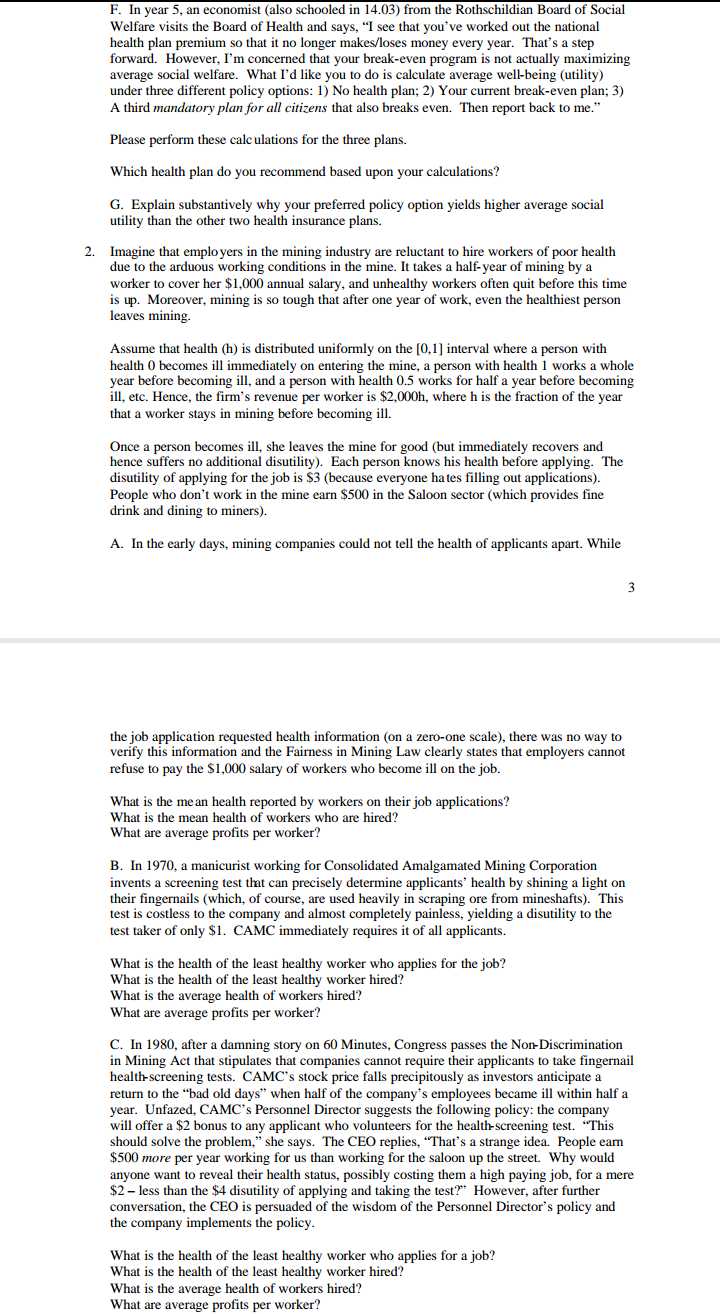



help in answering these questions
1. Nicholson problem 8.5 2. Bill is a Von-Neumann Morgenstern expected utility maximizer with a well-behaved, continuously differentiable utility function (i.e., no kinks or inflection points). Bill is presented with the following choices: A. $1,000 for sure B. 50% chance of $800 50% chance of $1,500 C. $500 for sure D. 50% chance of $400 50% chance of $900 Bill is indifferent between A and B and is also indifferent between C and D. (Note: this does not imply that he is indifferent between A and C or B and D.) Part 1. Is Bill risk neutral, risk averse, risk loving, or can't you tell? Explain. He is now faced with the following choice: E. $750 for sure F. 25% chance of $400 25% chance of $900 25% chance of $800 25% chance of $1,500 Part 2. Will Bill choose E or F, or is he indifferent between them, or is not possible to tell? (You must prove your answer) 3. Consider these four choices: A. $1,000,000 for sure B. .10 chance of $5,000,000 .89 chance of $1,000,000 .01 chance of $0 C. .10 chance of $5,000,000 .90 chance of $0 D. .11 chance of $1,000,000 .89 chance of $0 Before reading any further, choose which you prefer between A and B, and then choose which you would prefer between C and D. (The choice you make will not affect your grade.) It is commonly observed that people prefer A to B, and prefer C to D. Show that this pair of choices is inconsistent with expected utility maximization. 4. Suppose my utility function is given by: V =100W/49 where W is my wealth in thousands. My current wealth is $1,000. a. Characterize my relative risk aversion. b. Suppose I face a 0.1 chance of losing $100. Calculate my willingness to pay for an insurance policy that would pay me $100 in the event of such a loss. c. My utility is greatly augmented by my children. If they were to die, it would be reduced to: U = Wa Calculate the loss of wealth that would be equivalent, in terms of its utility impact, to the death of my children.d. Now suppose that there is a .01 chance that they will die suddenly. What would be the actuarially fair price for this insurance policy that would pay the monetary equivalent you calculated in (c) in the event of their death? Would I purchase such a policy? (Ignore any effect on my wealth that might result if they were sick or injured). Provide a substantive explanation for your conclusion. 5. Al, a risk-averse expected-utility maximizer with utility over wealth given by U(W), has W. dollars that he can either put underneath his mattress or invest in a risky asset. With probability p the rate of return on the asset is r, > 0, and with probability 1 -p the rate of return on the asset is r,














